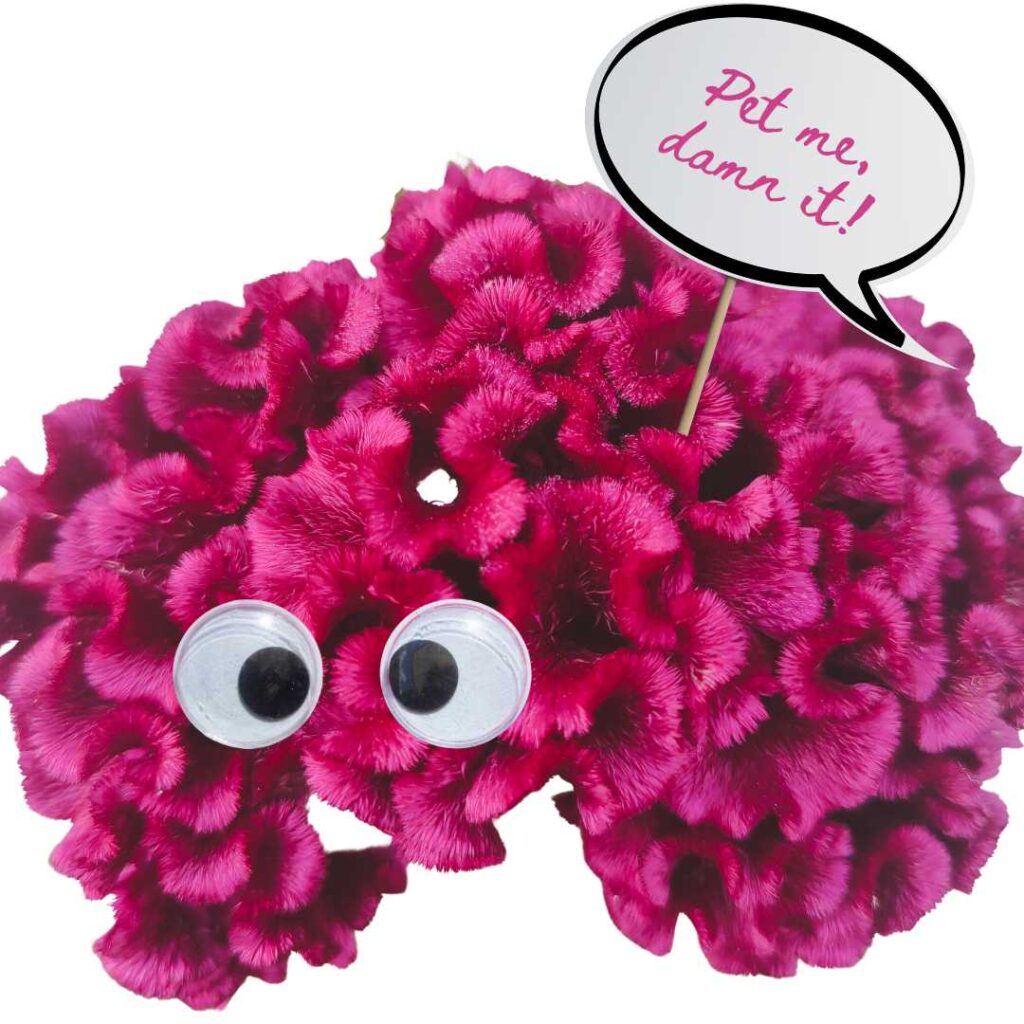We all get a little delirious in the extreme heat of August. We start having intense cravings for ice cream, water ice, margaritas, and brains. Wait, what?!?
I’m talking about velvety plant-based brains, also known as coxcomb celosia or crested celosia. But every customer I’ve ever had calls them brains, so that’s what we’re sticking with here. If you want to get technical, their Latin name is Celosia argentea var. cristata and they come in a stunning array of colors, including deep reds, vibrant pinks, golden yellows, rich oranges and muted champagne. Between their colors and textures, they offer a fun foil to softer flowers like roses or hydrangeas. In modern designs, they can act as a focal element all on their own. No matter the style, they always command attention!
Brains are just one type of celosia. There are two others with different shapes. Celosia argentea var. plumosa, or plume celosia, is characterized by its soft feathered texture. Like brains, it too has a bit of velvety-ness and a pinch of Muppet in it. Plume celosia is more upright than brains so it’s a good way to add some height to designs.
The third type of celosia is Celosia argentea var. spicata, or wheat celosia. It has slender elongated spikes resembling wheat, making it a great vertical filler. There are some more subtle, wedding-worthy colors in the wheat celosia category, including blush, soft yellow and champagne. The small side shoots can be excellent textural bits for personals.

Celosias of all types thrive in hot, humid August. You’ll see an abundance of every shape and color coming from our farms over the coming weeks, including many not seen at a traditional wholesaler. If you have a stem bar in your shop, the brains in particular are sure to spark curiosity. I’d suggest getting a bit silly with them, putting a pair of googly eyes and a thought bubble coming out of one. Ham it up! The world is far too serious right now. We could all use some levity!
Besides being just plain fun, brains and the other types of celosia make excellent dried flowers. That means if you’re not moving them fresh, you can always hang them upside down to dry and use them later in some autumn pieces or even Christmas wreaths (the vivid red brains dry to a perfect Christmas-y red). This really helps with shrink, that pesky profitability problem we’ve been dissecting lately in various blog posts and podcast episodes.
Celosia, when handled properly, can have a surprisingly long vase life of up to 14 days. They do dirty the water a bit so it’s good to use the “dirty flowers” tricks we talked about previously. Like many of their summer brethren, celosia do not like to be in a cold cooler. If stored too cold, their vase life may be shortened and they can have visible damage, such as blackened leaves. Best to store them at a similar temperature as zinnias and lisianthus: 40-42F.
Be smart. Buy some brains.

